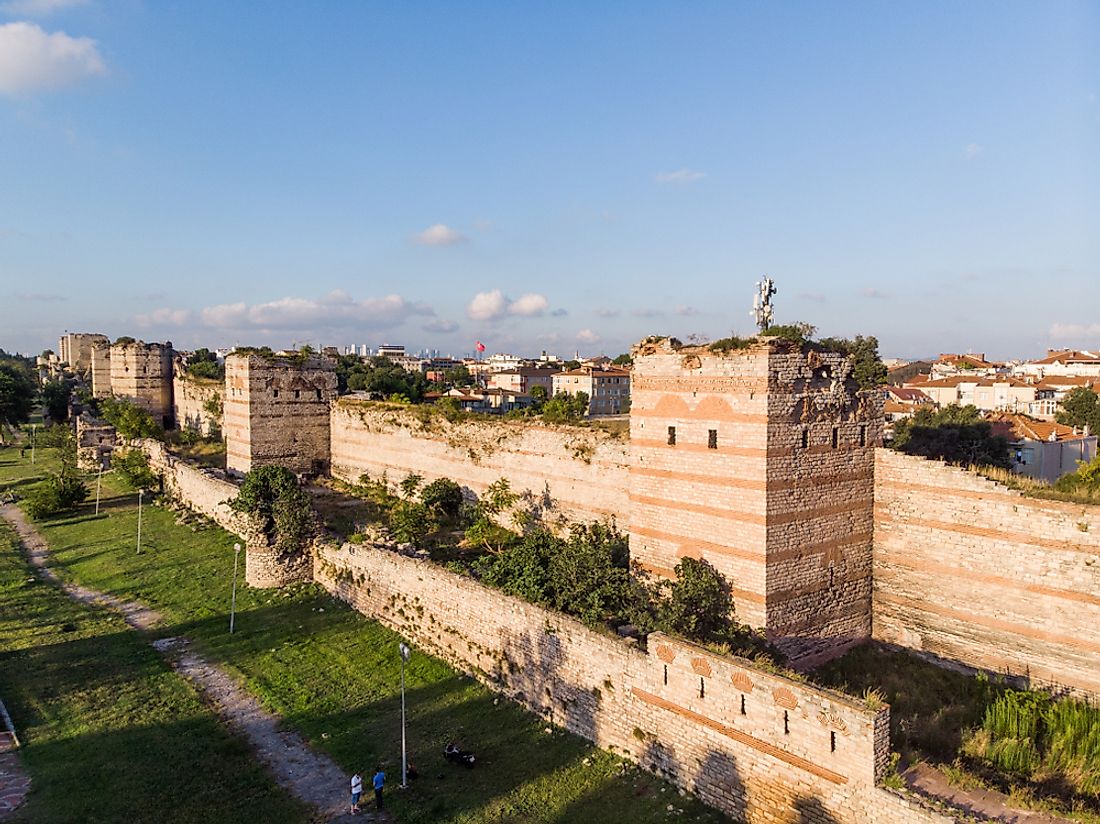What Was the Capital of the Byzantine Empire?

The Byzantine Empire was a large and powerful empire that was established in 330 AD by Emperor Constantine I as an eastern expansion of the Roman Empire. Created as a "New Rome" in Byzantium, formerly an ancient Greek colony, the capital of the Byzantine Empire was Constantinople. Considered the Eastern Roman Empire, it served as a military buffer between Asia and Europe, had a rich tradition of literature and art, as well as the most powerful economy in Europe. The Byzantine Empire survived for more than 1,000 years after the fall of the Western Roman Empire, but eventually fell to the Ottoman Empire in 1453. The city of Constantinople now exists as modern-day Istanbul, Turkey.
Constantinople
Constantinople was the capital city of the Byzantine Empire. It was established as the center of the new empire in 330 AD and grew to become one of the largest and wealthiest cities in medieval Europe. The city survived numerous attacks and sieges, thanks to the elaborate and effective defense structure that surrounded it. However, in 1453, after a long period of decline, Constantinople finally fell to the Ottoman Empire. The fall of the city also marked the end of the Byzantine Empire.
Founding of Constantinople
Emperor Constantine I had an elaborate vision to consolidate the Christian Church and better unite the empire. However, Rome, which was the capital of the Roman Empire, was considered to be a hindrance to achieving these objectives as it was far from the empire's frontiers, armies, and imperial courts. The empire identified Byzantium as an ideal location for a capital city and imperial residence. The site could also be readily defended and had access to the Euphrates river. As a result, the city of Constantinople was built up over a period of six years, beginning in 324 AD, and consecrated on May 11, 330 AD. Since Constantinople was to serve as the emperor’s imperial capital, Constantine I ordered the construction of architecturally stunning buildings and impenetrable walls around the city. The walls would ensure that the city could survive attacks and sieges even after the fall of the Western Roman Empire.
Significance of Constantinople
Constantinople grew to become the largest and wealthiest city in medieval Europe. Its growth is attributed to its strategic position, where it commanded the trade routes between the Black Sea and the Aegean Sea. Constantinople dominated the economy of the Mediterranean, and visitors to the city were awed by its stunning architecture. The Byzantine Empire created its own unique architecture style that drew upon both Greek and Roman examples. Constantinople became a prime center of Christianity, and the city's later conquest also holds great religious importance to Islam.
Fall of Constantinople
Constantinople finally fell to the Ottoman Empire in 1453 after years of decline. The city had lost several important economic resources and struggled to survive. By the mid-15th century, Constantinople had lost much of its power and was reduced to clusters of villages within the confines of the city. Under the leadership of Sultan Mehmed II, the Ottoman army sieged the city, breaking in after seven weeks, resulting in the fall of both Constantinople and the Byzantine Empire.











